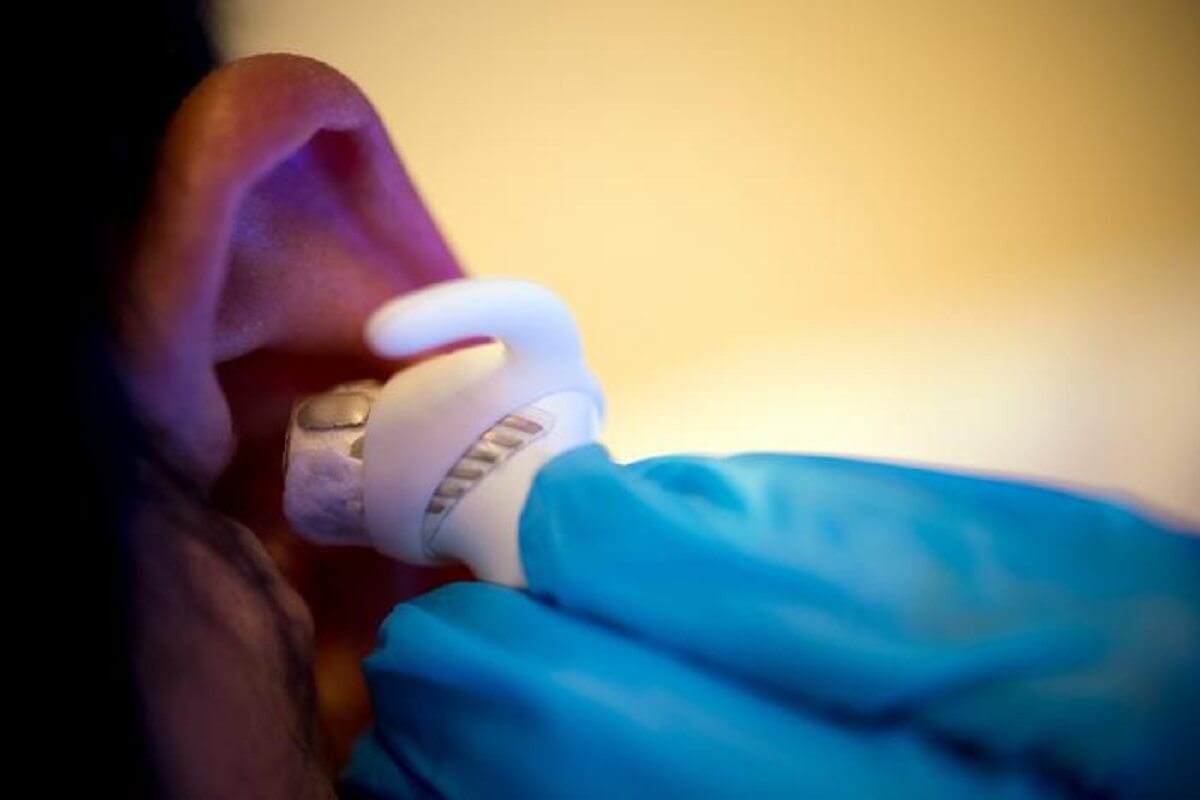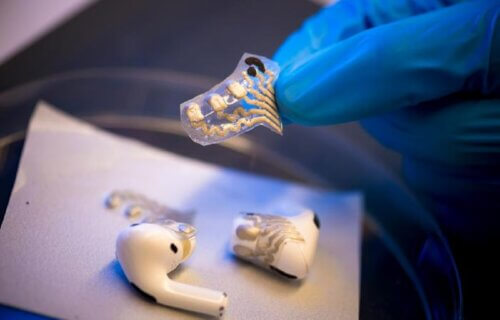SAN DIEGO — Standard earbuds can be transformed into a device that records brain activity and exercise levels, scientists explain. A team in California says this transformation is made possible by adding two flexible sensors that are screen-printed onto a stamp-like flexible surface.
These sensors communicate with the earbuds, which then wirelessly transmit the collected data for visualization and further analysis on devices like smartphones or laptops. This data can serve as a tool for long-term health monitoring and detecting neuro-degenerative conditions.
The scientists believe these sensors, created by engineers at UC San Diego, are less obtrusive than current state-of-the-art devices that measure the brain’s electrical activity and the body’s sweat secretions. The research team has demonstrated their use in real-world exercise scenarios.
“Being able to measure the dynamics of both brain cognitive activity and body metabolic state in one in-ear integrated device that doesn’t intrude on the comfort and mobility of the user opens up tremendous opportunities for advancing health and wellness of people of all ages, anytime and anywhere,” says Gert Cauwenberghs, a professor in the Shu Chien Gene Lay Department of Bioengineering at UC San Diego, in a university release.
This achievement stemmed from a blend of biomedical, chemical, electrical, and nano-engineering expertise.
Scroll down to watch how these earbuds work

They further explain that data from an electroencephalogram (EEG), which captures the brain’s electrical activity, combined with sweat lactate — a product of exercise and normal metabolic activity — can serve various purposes. These include diagnosing types of seizures, monitoring effort during exercise, and gauging stress and focus levels.
To ensure accuracy, the team compared the data collected during their proof-of-concept study against those obtained from commercially available dry contact EEG headsets and blood samples containing lactate. Their findings showed that the data from their flexible sensors were equally effective.
The scientists say the future of neuroimaging and health monitoring may involve wearable sensors and mobile devices — such as phones, earbuds, and watches — that constantly track brain activity and health indicators.
“Being able to measure the dynamics of both brain cognitive activity and body metabolic state in one in-ear integrated device that doesn’t intrude on the comfort and mobility of the user opens up tremendous opportunities for advancing health and wellness of people of all ages, anytime and anywhere,” says Prof. Cauwenberghs.
Recognizing that earbuds are commonly worn, the team sees a significant, yet untapped, potential to conveniently gather brain and bodily signals.
“Earbuds have been around for decades, and in many ways were one of the first wearable devices on the market,” says Professor Patrick Mercier, a professor in the UC San Diego Department of Electrical and Computer Engineering. “This research takes important first steps to show that impactful data can be measured from the human body simply by augmenting the capabilities of earbuds that people already use on a daily basis.”

Given the ear’s proximity to the brain and its sweat glands, Dr. Yuchen Xu states, “It’s a natural entry point–people are used to wearing earbuds.”
The researchers emphasize the importance of integrating the sensors seamlessly, ensuring they’re compact and can adapt to the ear’s unique shape. The team adds that the main technical hurdle was integrating two sensors in the ear and obtaining reliable signals from both the EEG and lactate.
For efficient sweat collection, the team coated the electrochemical sensors with a transparent hydrogel film, which Dr. Xu described as “sponge-like and hydrophilic.”
“This new and powerful in-ear multimodal wearable bioelectronic platform offers a rich source of real-time information on the health of the users, by recording simultaneously and dynamically physical and biochemical information,” says Prof. Joseph Wang.
However, one limitation is the need for participants to exercise and sweat to gather sufficient lactate data. The team hopes future iterations will eliminate this requirement, with the goal of wirelessly transmitting processed data to devices. These in-ear sensors might also capture additional data like oxygen saturation and glucose levels, paving the way for innovative treatments.
“Auditory neurofeedback coupling the measured brain signals with sound played by the device in the ear may enable potentially far-reaching new therapeutic advances for active remediation of debilitating neurological disorders, such as tinnitus for which currently no effective treatment is available,” notes Prof. Cauwenberghs.
The study is published in the journal Nature Biomedical Engineering.
South West News Service writer Stephen Beech contributed to this report.

